Piolets d'Or Announces the "Significant Ascents" of 2023
This list of 68 climbs is effectively a "long list" used to select nominees of the prestigious alpine award.
A visit to one of Africa’s most extraordinary and important wetlands. Home to over 680 species of birds.

We wake to the cry of a fish eagle, and I’m reminded of what explorer and missionary David Livingstone, is said to have remarked in the Bangweulu swamps almost 150 years ago…
This was shortly before, exhausted by a gruelling eight-month trek through the swamps searching for the source of the Nile, that Livingstone knelt beside his bed to pray and died. Livingstone’s heart was buried, beneath a ‘mpundu’ tree, near the edge of the swamps. His body was carried to the coast and sent back to England, where he was ultimately buried in Westminster Abbey. We’ve come to explore the Bangweulu wetlands, in northeastern Zambia, to see the endangered and endemic Black Lechwe, as well as the wetland’s two other flagship and endangered species, the Shoebill and Crowned Crane.
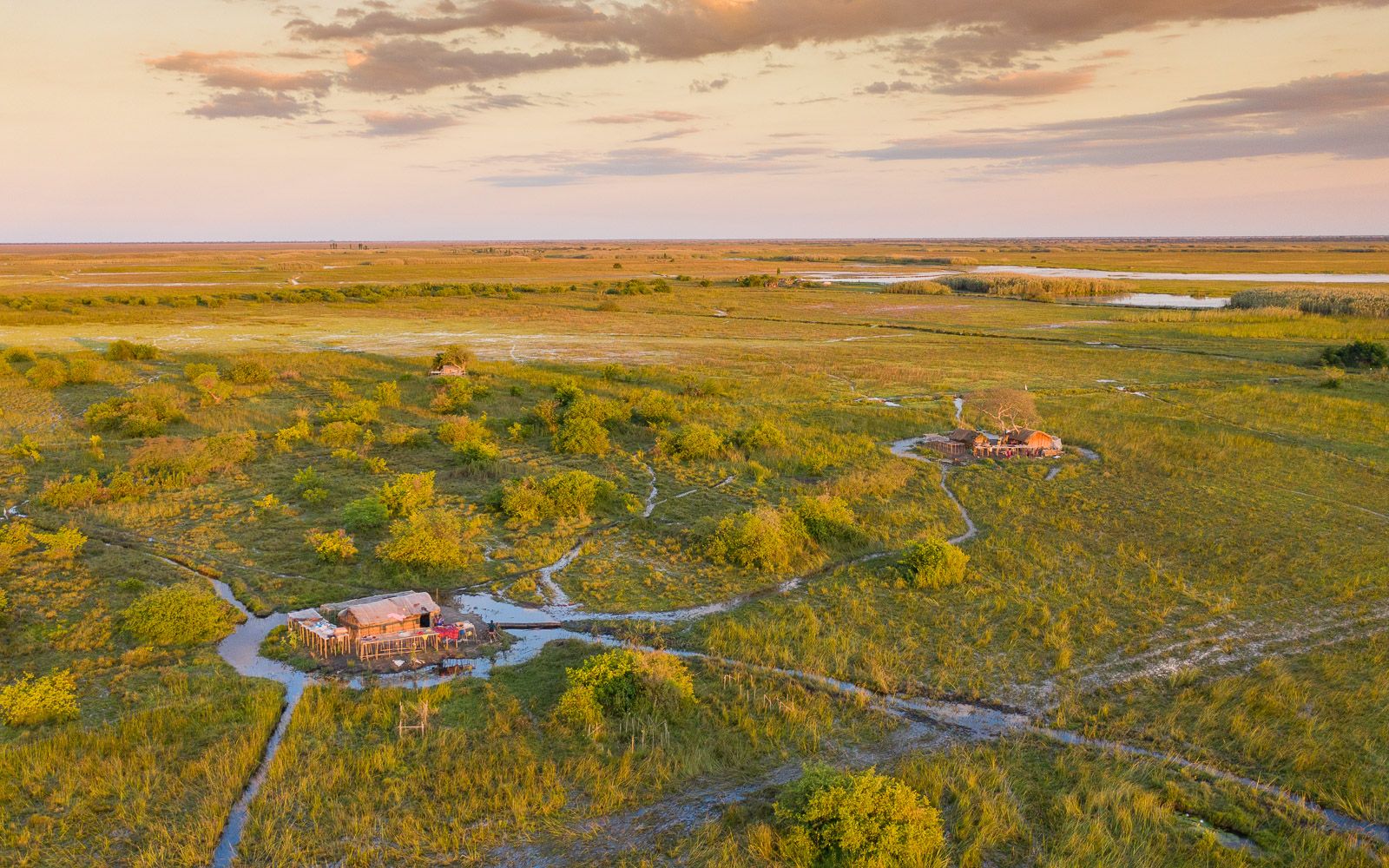
The Bangweulu Basin, including the vast Lake Bangweulu and the massive Bangweulu Wetlands, lies in a shallow depression in Northern Zambia. The basin is fed by 17 principal rivers from a catchment area of 190 000 kms2, but is drained by only one river, the Luapula. The area floods in the wet season (November- March), receiving an average annual rainfall of about 1200mm. The resultant effect is that the flood line advances and retreats by as much as 45 kilometres. It is this seasonal rising and falling of the floodwaters that dictates life in the swamps. This is an extraordinary, community-owned, protected wetland, with a rich and diverse ecosystem of floodplains, seasonally flooded grasslands, miombo woodlands and permanent swamps. The area is home to both wildlife and about 50,000 people. Bangweulu is unusual in terms of wildlife conservation, in that it is made up of Game Management Areas, where local villagers are permitted to sustainably harvest natural resources. ‘Sustainability' has not always been the case though. Relentless poaching had exterminated several large mammal species, decimated the black lechwe population and left only tiny remnant populations of buffalo, elephant and hartebeest. Overpopulation, overfishing, and unsustainable pressure on wildlife, ultimately led local Community Resource Boards and the Zambian Department of National Parks and Wildlife, to enter into a long-term agreement with conservation NGO African Parks, to sustainably manage and protect the area’s natural resources.

We are in Shoebill Island Camp, nestled in a grove of quinine trees, on a tiny island in the swamps. We’ve woken early, to paddle from the camp to the floodplains, to see the beautiful black lechwe, who call this unique wetland home. We reach the floodplains just as the sun peeks over the horizon, turning the sky from grey to pink. Standing on the causeway that runs through the middle of the floodplains and shivering in the cold morning air, we are surrounded on all sides by thousands of lechwe, only just visible through the early morning mist. Having come into the water overnight for safety, the lechwe, their hindquarters characteristically higher than their shoulders, and their elongated, spreading hooves preventing them from sinking into the swampy ground, are now heading slowly back towards the tree line, grazing on the nutrient-rich semi-aquatic grasses as they go. Once the sky is light and the lechwe have all but disappeared, it’s time to paddle the 40-minute canoe trip back to camp where a late breakfast awaits.
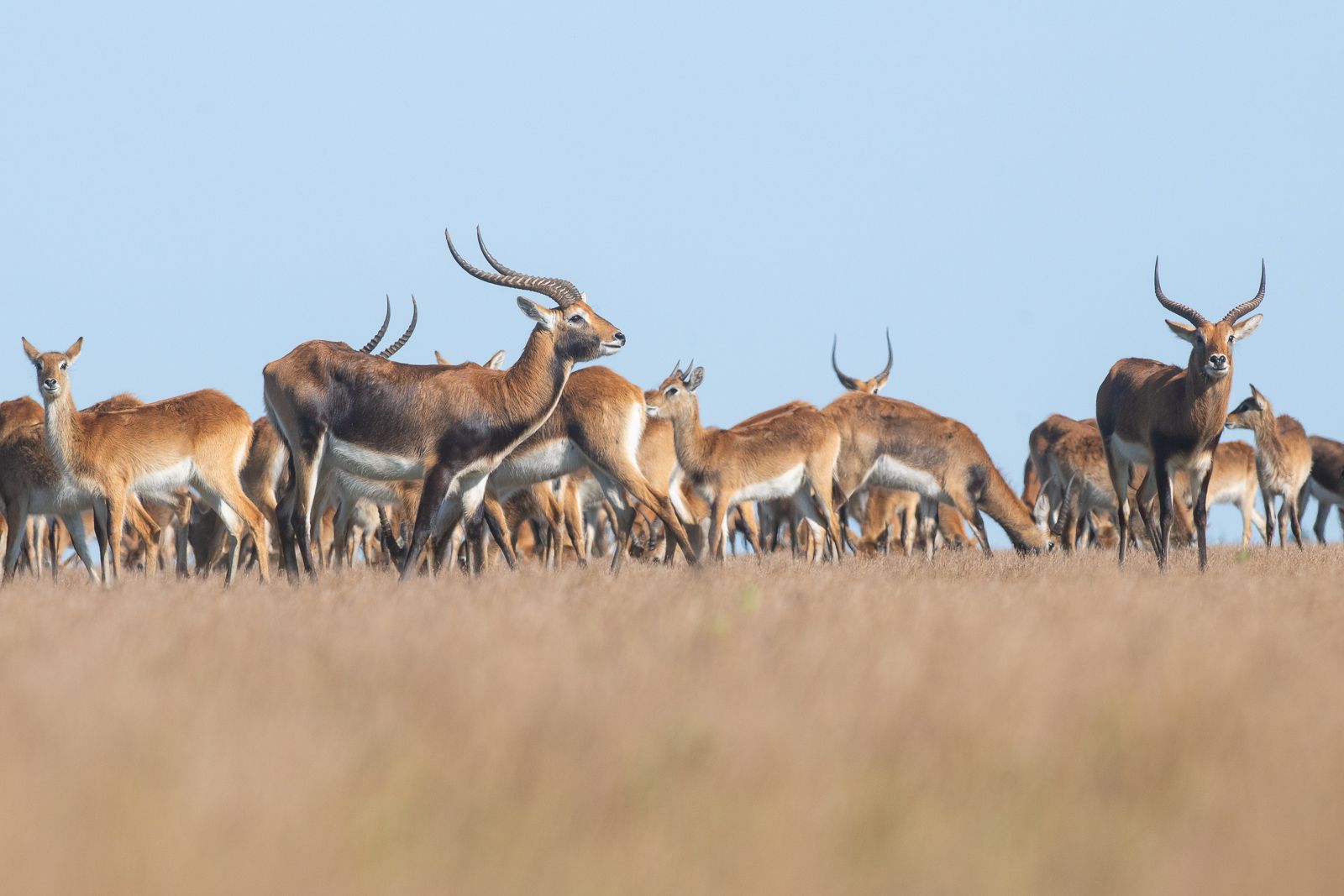
Black lechwe is listed as vulnerable on the IUCN Red List, and their numbers have sadly plummeted drastically. 50 years ago more than half a million black lechwe could be found in Bangweulu. An aerial census in 1983, estimated that the population had plummeted to 35,000. Fortunately for the lechwe, in 2008 African Parks, began working in the wetlands, and since then their numbers have slowly but steadily increased, currently standing at over 50,000.
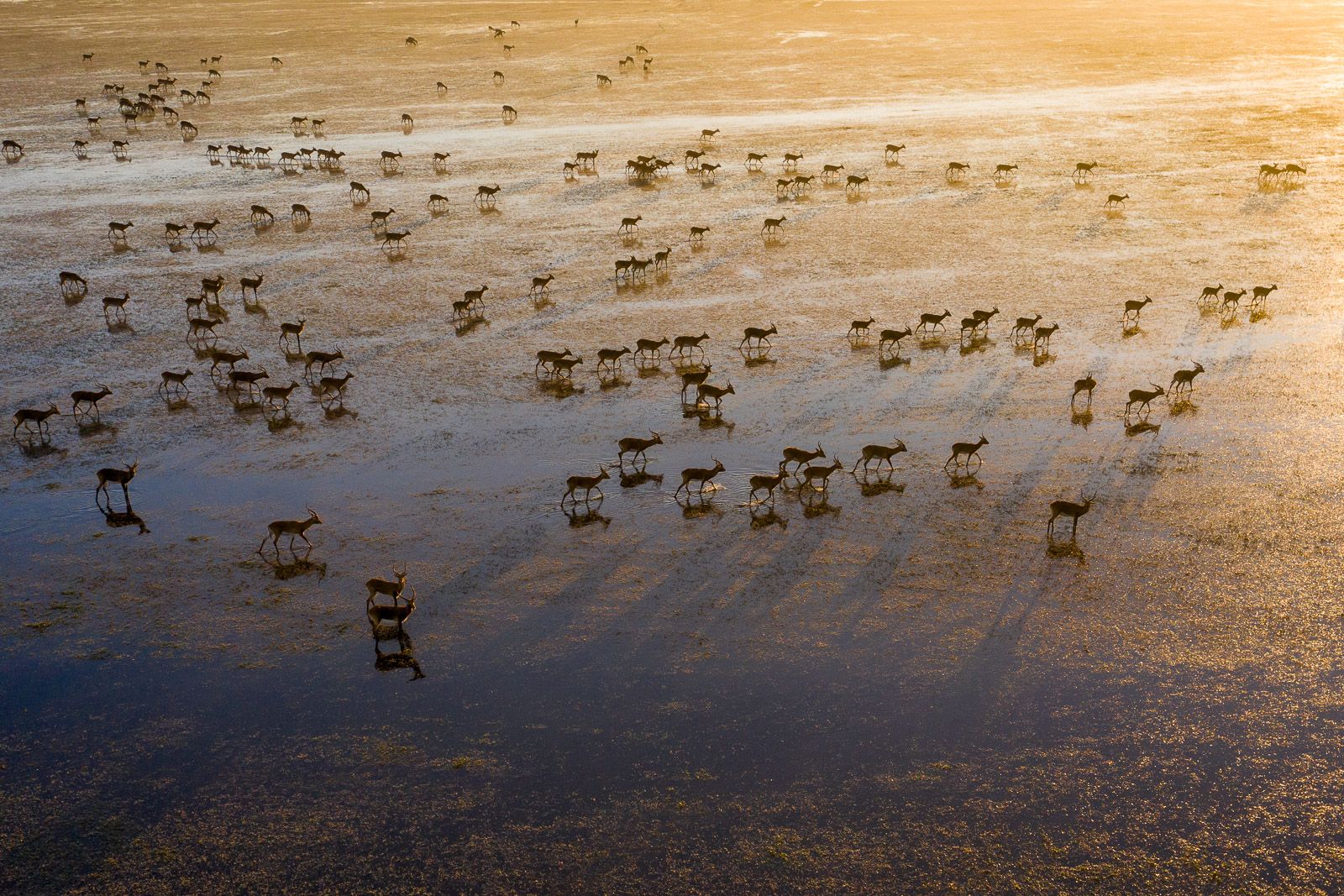
The wetlands are home to an abundance of birds. Over 680 species, 400 of which are globally significant migratory and resident birds, are found here. Kingfishers, ibis, geese, bee-eaters, terns, gulls, teals, storks, weaver birds, ducks, egrets, herons, bitterns and more! The jewel in the Bangweulu ornithological crown though is definitely the Shoebill.
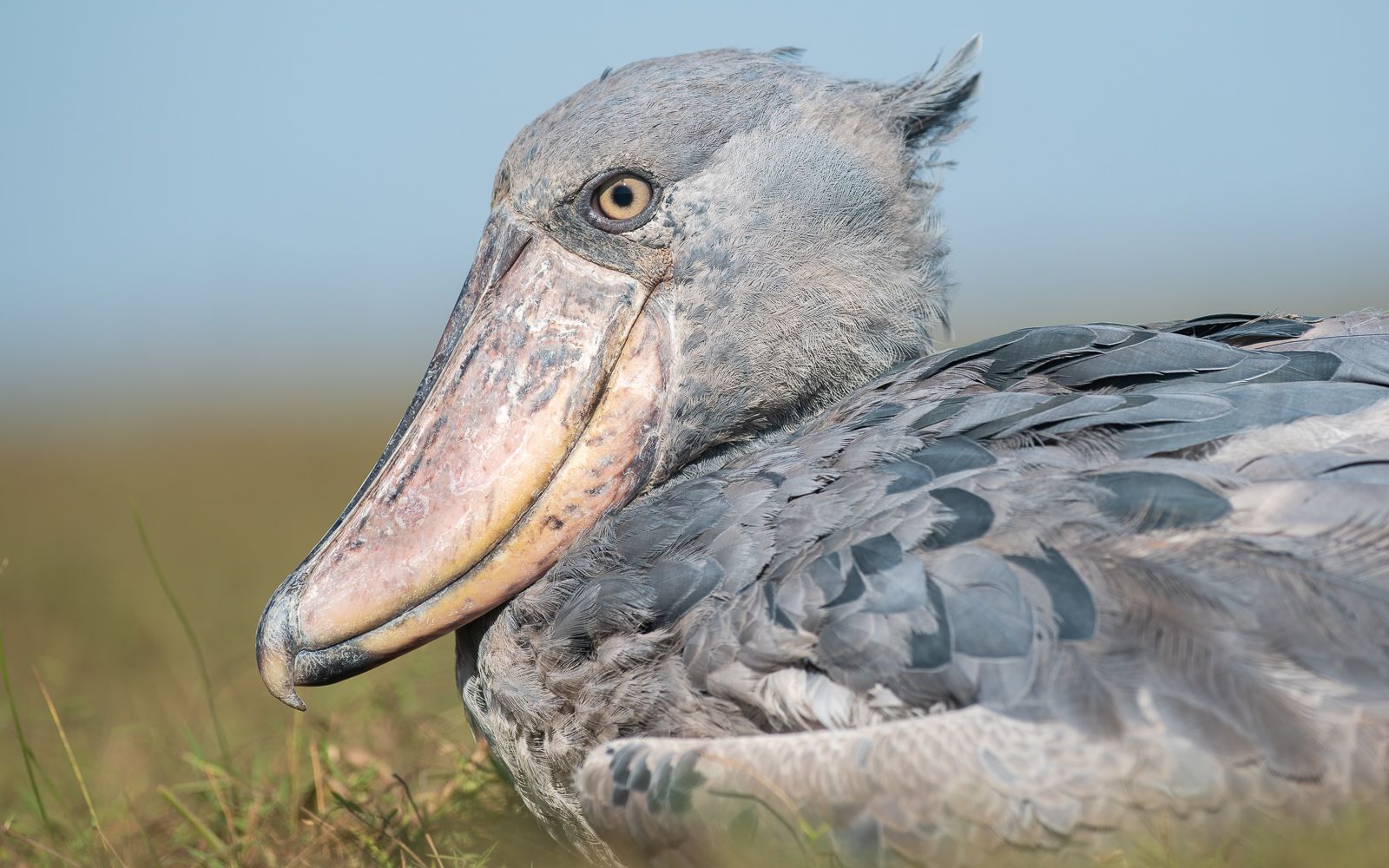
Shoebills are endangered, the IUCN estimates global populations of these amazing birds to numbers at somewhere between 3,300 and 5,300, and numbers are decreasing. Classified as vulnerable, people come from all over the world to catch a glimpse of these tall, sturdy, blue-grey birds, with their shaggy nuchal crests and piercing yellowish white eyes. These prehistoric-looking birds remain threatened by the illegal live bird trade, specifically the sale of chicks, for which unfortunately the demand is increasing. Fortunately, though, the local communities are starting to come together, recognising the Shoebill as a tourist draw of economic benefit, and are guarding nests to ensure chicks can fledge and generally keeping a watchful eye on the birds. The area of the Bangweulu wetlands currently protected by African Parks is home to somewhere between 300 and 500 of these birds, so seeing one was our plan for the afternoon.

This is without a doubt a place worth conserving and visiting.
For our first Shoebill ‘hunt’, we cheated a little and went looking for a rescued, habituated Shoebill. Poachers had taken the chick from its nest and, removing it from the swamps, were actively trying to sell it when they are apprehended. The chick was confiscated and returned to the wetlands, where it was nurtured by rangers until ready to release back into the wild. Having become somewhat used to humans, we’re told it is usually fairly easy to find him near a local fishing village. Heading there, our guide stands at the front of the canoe, long pole in hand, propelling us through the narrow channels in the thick reeds and papyrus. With many people living seasonally in the swamps, we pass several small settlements of dilapidated mud and thatch huts. Music plays, children laugh and play, men talk, and women do the ‘chores’, which can’t be easy, given the very basic living conditions, and being permanently surrounded by water.
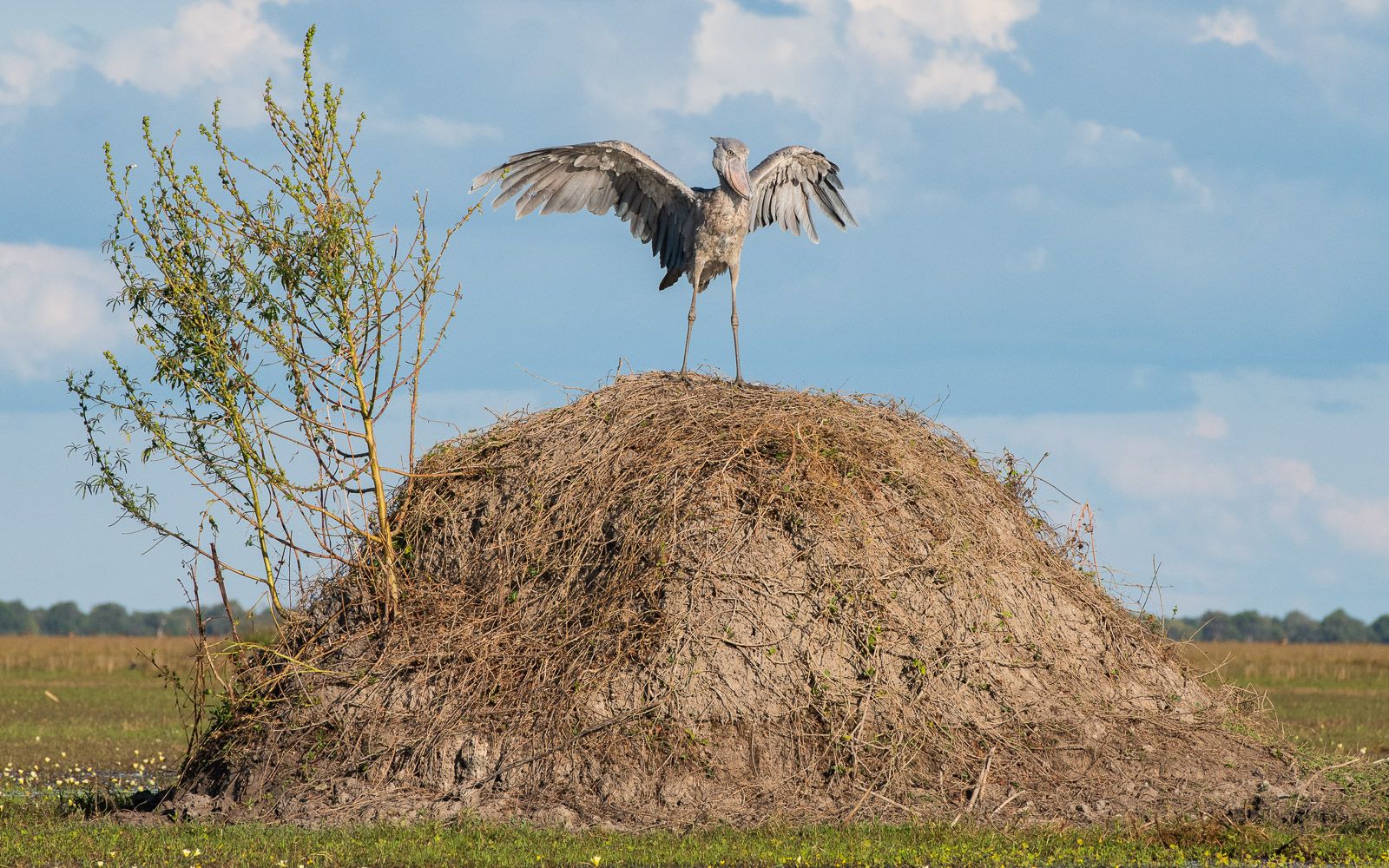
When we find it, the shoebill is lying on top of an ant-hill on the outskirts of a fishing settlement. We anchor the canoe at the edge of the channel and we climb overboard, wading through the knee-deep water to get a little closer. We don’t get too close, though I think if we had wanted to, it would have just about let us walk up and pat it on the head! Seeing us, the Shoebill stands up, preens a little, flaps his wings experimentally, and displays some fancy footwork, all before lying down again and apparently falling asleep. We splashback to the canoe and head back to camp. In the days to come, we would see several more Shoebills, and get just as close to some, but the sight of my first Shoebill will still hold a special place in my heart.
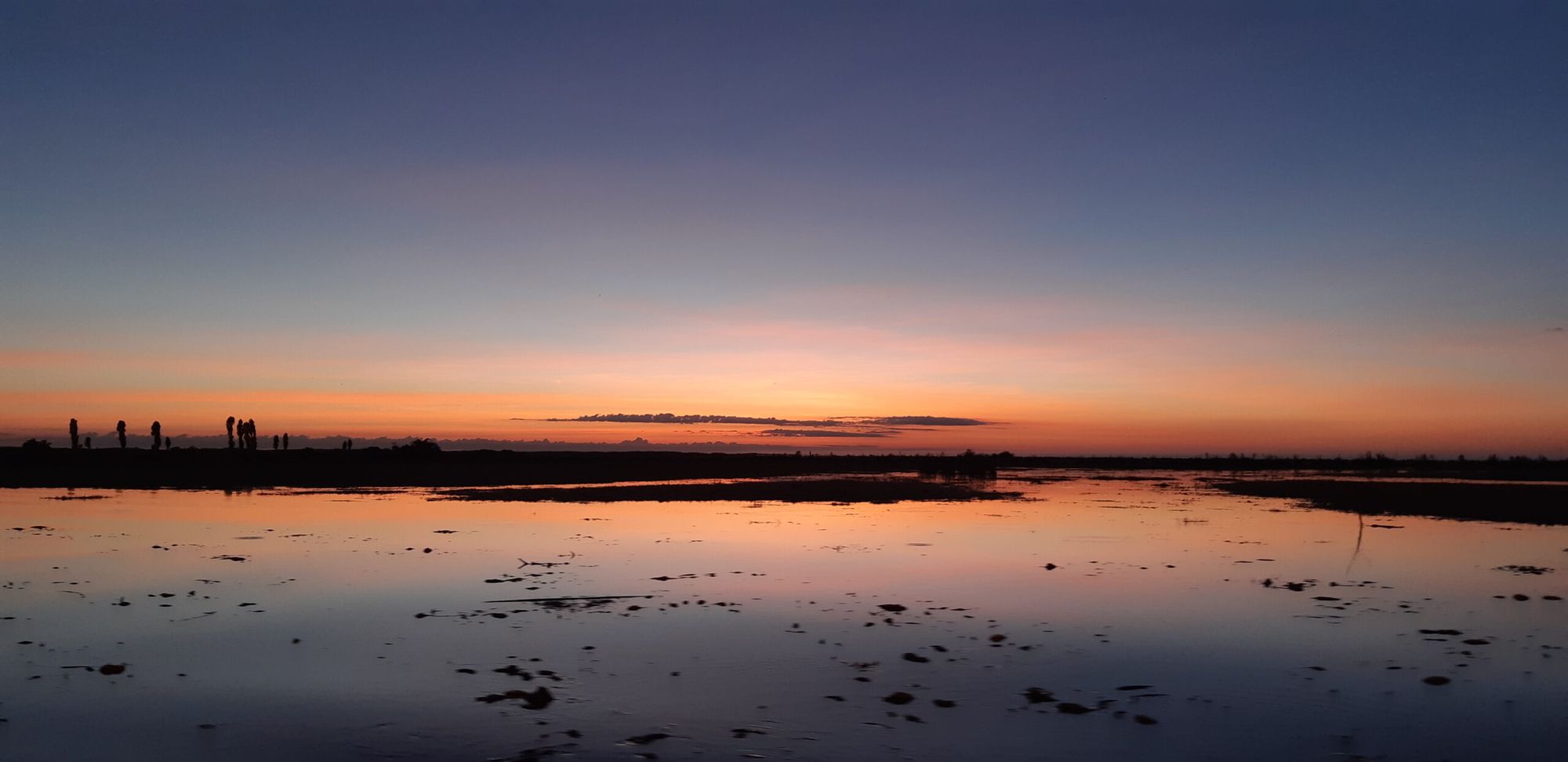
As we sit by the fire after dinner that night, millions of stars sparkle overhead and countless fireflies flit in the shadows outside the circle of firelight. We can hear hyenas in the distance. We can also hear music and chatter from a nearby fishing village.
The next morning we’re out again. First spending time with another shoebill, this one barely 20 minutes from camp. He stands and watches us for a while and then, with his large, splotchy, sharp-edged bill, he forages in a channel opened up by local fishermen. A teenage boy arrives to repair some fishing nets that have been damaged by a hippo the previous evening. The shoebill stands watching the boy too. Only once the boy has finished repairs, and starts walking a little closer, does the shoebill, with a powerful leap and a few heavy wing beats, take to the air and fly away. We carry on paddling and around a few more bends, find several Wattled Cranes and stop to watch.

Wattled Cranes are the sole inhabitants of the somewhat disturbingly named genus Bugeranus. Classified as vulnerable, with an estimated population of only 7,700, these are the rarest of Africa’s crane species and numbers are dwindling, primarily as a result of disappearing wetlands. The future of wattled cranes in Africa may well depend on Zambia. Zambia is home to more than half the world’s Wattled Cranes, with Bangweulu itself holding 10% of the global population of these incredible birds. The future looks a little gloomy for these cranes, though that was easy to forget as we saw pair after pair of the long-legged, bare-faced, black-capped birds, with their distinctive long white necks and white wattles dangling from their throats.
A successful model of community-driven
Bangweulu Wetlands is a successful model of community-driven conservation. A project designed to ensure both people and wildlife equally benefit from the area’s incredible natural resources. When Africa Parks began working here overpopulation was a colossal problem. With approximately 50,000 people living legally within its boundaries, and 100,000 more living in the surrounding areas, poaching, overfishing and the cutting of trees for charcoal was a big problem. The entry of African Parks saw the implementation of wildlife education, reproductive health and beekeeping programmes. Rangers were employed to patrol, remove snares, and confiscate illegally caught fish and poached game meat. Africa Parks has also successfully translocated large numbers of animals into Bangweulu, including zebra, impala, buffalo and, in 2020, cheetah were released back into the area, with more due later this year. Tourism has been another focus, with two community camps (Nkondo and Nsobe) being opened, as well as the fabulous Shoebill Island Camp (under the management of Remote Africa Safaris).
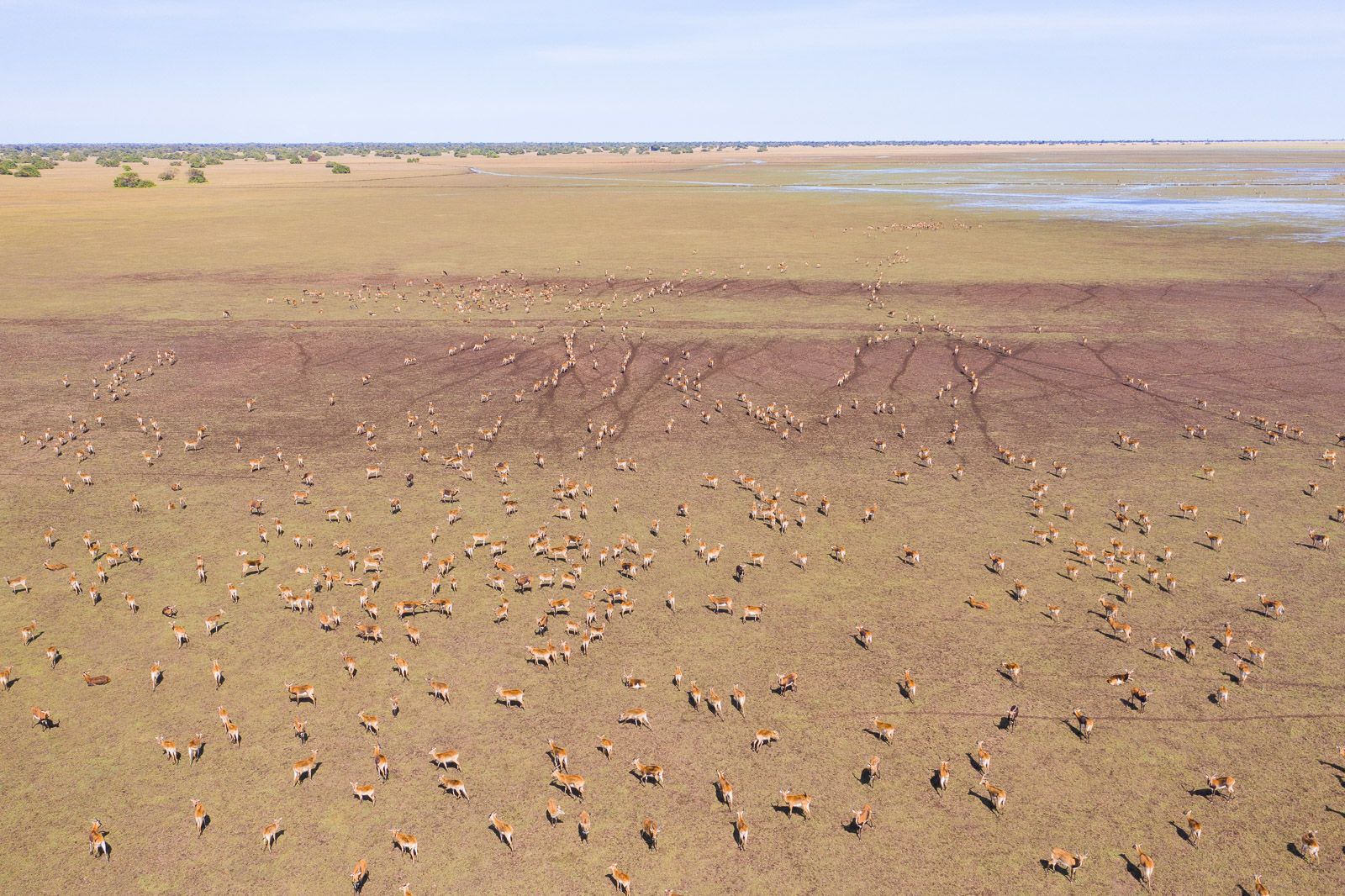
The long term sustainability of Bangweulu, one of Africa’s most extraordinary and important wetlands, will depend on continuing to build, and maintain, successful partnerships with the local communities. This is without a doubt a place worth conserving and visiting.
For bookings at Shoebill Island Camp contact www.remoteafrica.com/camp/shoebill-island-camp/ and for enquiries and accommodation through African Parks contact www.africanparks.org/the-parks/bangweulu
Cover photo: Local fishermen in a traditional wooden boat. Photo by Patrick Bentley
2nd best newsletter in the universe